Australia’s best inland swimming spots and waterholes
Our dazzling beaches get all the attention, but Australia is awash with inland options for taking the plunge.

Swimming holes hold a special place in the hearts of hikers, presenting a chance to cool off, often in the middle of pristine bush. For those who prefer a gentle stroll to the water from their car, there are oodles of options too. Prospective plungers can access numerous guides offering detailed advice for everyone from the timid paddler to the hardcore canyoner.
One source of inspiration is the book Swimming Holes Near Sydney. Its authors define a swimming hole as “a body of freshwater of depth that is over your head, and ideally provides some seclusion, beauty and maybe some thrills”. The 4th edition of the pocket-sized guide was published as lockdown ended this year, just in time for summer-holiday roadtrippers.
Brad Neal’s swimmingholeheaven.com is another option. He guarantees all his recommendations have been “personally verified by getting into the water”.
Neal, a hydrologist by profession, self-published his Guide to Freshwater Swimming Holes in Victoria back in 2004 and has since been steadily adding to his online guide, which covers spots in other states and a few in New Zealand and Fiji.
He says there are broadly half a dozen different kinds of swimming holes in Australia: deep river holes, waterfall pools, constructed lakes often originally built as water supplies, pools built across a creek or river (popular pre-1956, and only a handful survive), similar pools created by natural geological events blocking off a river, and natural thermal springs.
Here is a trickle to whet your appetite to find your perfect spot for the inland oasis.
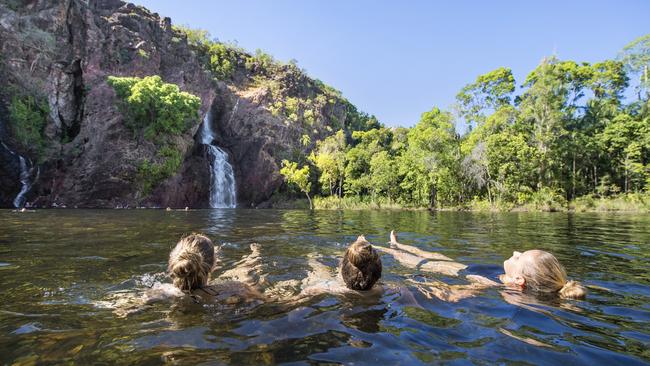
NORTHERN TERRITORY
The Territory’s swimming holes are renowned for their geological majesty – and saltwater crocodiles. Neal’s top pick is Wangi Falls in Litchfield National Park, south of Darwin. Two waterfalls pour into it, but it was closed to swimmers when I visited in May thanks to a visiting saltie that was about to be moved on. Wangi Falls is fully kitted out with a cafe and changing facilities. “There is so much to like: it is clean, the water is clear, it is big, it is picturesque, there are no underwater obstacles, entry to the water is safe and easy, the air temperature is consistently hot…” writes Neal on swimmingholeheaven.com. Clearly one of the best inland swimming spots around. “Litchy” has other popular pools, including Florence Falls, which features thundering twin cascades, barramundi and no crocs, but the amphibians move about, so pay attention to signs and ranger advice.
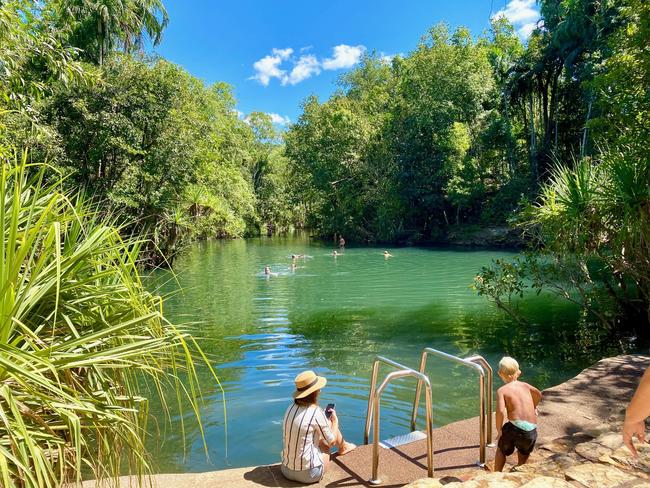
Berry Springs Nature Park, about 50km south of Darwin, has a series of large pools fed by a warm underground spring, but the main body of water is cool. The park was the location for a massive R&R camp during World War II, and history buffs can find the remnants of huts and weirs around the main pool.
Many sites are closed during the wet season from October to April, and several sacred water holes are open to visitors but swimming is forbidden. About 80km from Alice Springs, Ellery Creek Big Hole in Tjoritja/West MacDonnell National Park is accessible year round, with the water just a five-minute walk from the car park. Alice Springs Beach, as the locals call it, is accessible via 2WD, with a 2km unsealed section. Experienced hikers can reach sections of the Larapinta Trail from here but there are also some great short walks in the area. The water is extremely cold and even in summer swimmers are advised not to stay in too long. It’s too far inland for crocs, but you might see dingoes.
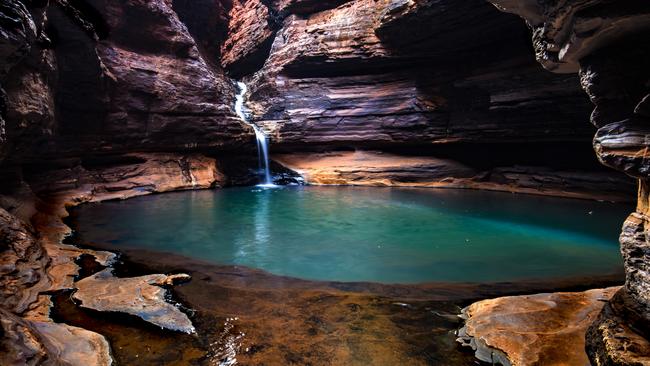
WESTERN AUSTRALIA
Drive southeast from Port Hedland via Marble Bar and in about half a day you’ll reach Carawine Gorge, a spectacular swimming, fishing and birding spot that will definitely not be crowded. A sheer limestone wall drops into crystal clear water. 4WD is recommended and camping is welcome.
In WA terms, Karijini National Park is in the same neck of the woods, about 350km south of Port Hedland and a popular destination for FIFO mining workers on their days off. There are a number of gorges for swimming. The Aboriginal-owned Karijini Eco Retreat is on the edge of Joffe Gorge, with campsites as well as deluxe eco tents and cabins, a restaurant, bar and tours.
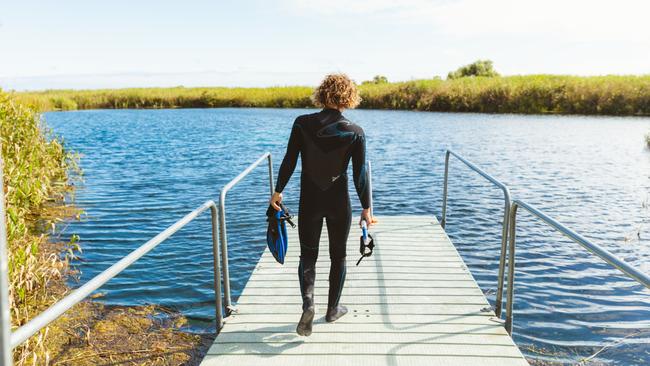
SOUTH AUSTRALIA
The trek to reach Blinman Pools – 12km return and with no formal track – is only for the serious and seriously fit, but the rewards are two natural pools, waterfalls in winter and wildlife galore putting it at the top of our list for the best inland swimming spots. Alpana Station, a working sheep property in the Flinders Ranges with a campsite and accommodation, offers 4WD tours (discounted for guests) that take you a little closer, but you still need to be in good shape.
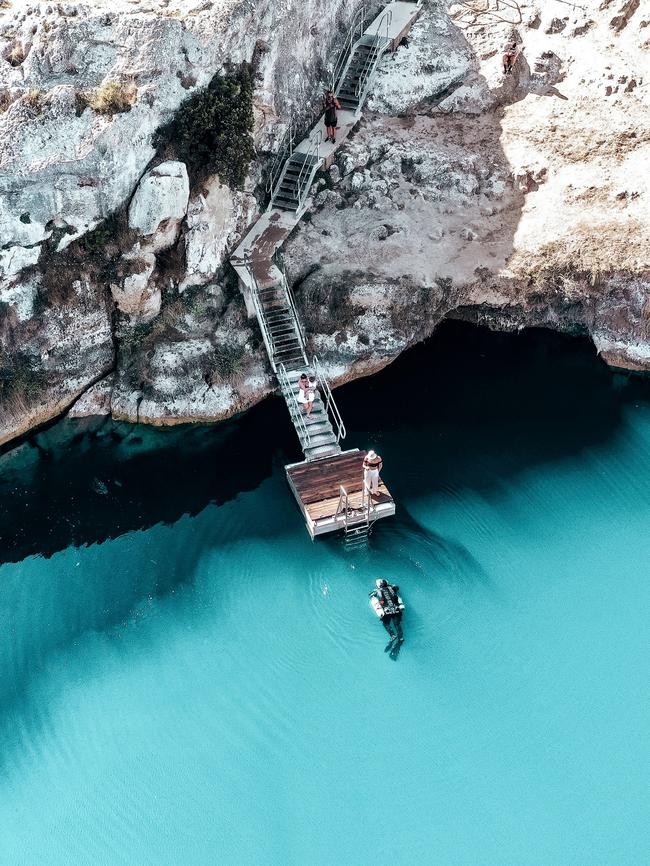
In a paddock in the Kanawinka area between two dormant volcanoes, Mt Schank and Mt Gambier, you can swim in a dramatic sinkhole. Little Blue Lake is a mecca for certified cave divers, who describe it as one of the best dives in the world. The maximum depth of this volcanic sinkhole is 47m, and its most shallow point is 25m. Stairs and a floating pontoon make access to the chilly water pretty easy. You can’t swim at the (big) Blue Lake in the nearby extinct volcano crater because it’s Mount Gambier’s water supply, but you can take a tour around it.
Also nearby is Ewens Ponds Conservation Park, another unique water feature. It features three spring-fed sinkholes up to 80m deep and famously clear for snorkelling and diving. Permits and a booked timeslot are required. The ponds are closed for three months each year to December 1 to give the aquatic life a breather before summer.
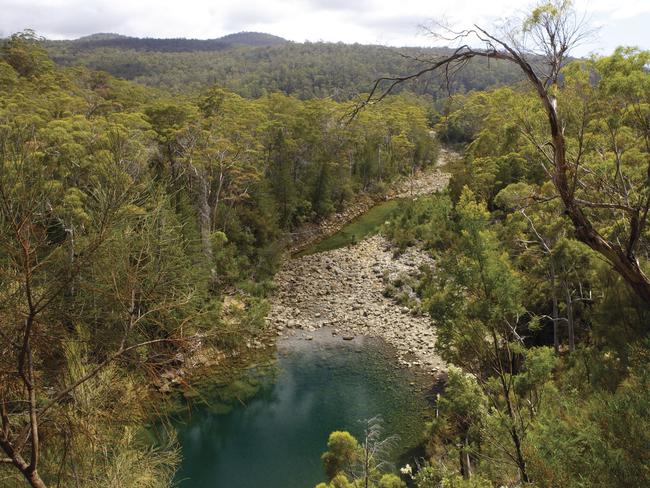
TASMANIA
Embrace the thrill of the chill in the Apple Isle. The walk to Apsley River Waterhole and Gorge starts in Douglas-Apsley National Park about 15 minutes inland from Bicheno on the east coast. There’s a choice of routes, with the shortest to the waterhole just 600m from the carpark through open woodland. The walk to the gorge is more challenging and will likely involve rock-hopping. Look out for the Australian grayling, an endangered native fish that grows to about 30cm in length, and check river water levels before you go.
Hastings Caves and Thermal Springs is an easy day trip from Hobart in the Huon Valley. Parks and Wildlife Service guides take visitors on a spectacular tour through the largest dolomite cave in Australia accessible to tourists. The man-made in-ground pool is fed by a thermal spring that keeps it at about 28C year-round. With picnic tables and barbecues, the tamed wilderness is still serene.
VICTORIA
One of Neal’s earliest swimming-hole memories was camping at Buchan Caves Reserve in Gippsland as a child. “There’s a stream that comes out of the cave and spills into a small in-ground pool,” he says. “The water that comes out is excruciatingly cold but I love it.”
He has plenty of favourites in his home state, and says this year should be especially good after a lot of rain. “It’s an opportunity to visit some of those swimming holes that are often dry,” he says. His pick is Lake Fyans, “with a lovely sandy bottom, an amber hue to the water and a view of the Grampians”.
In Victoria’s northeastern High Country, near Strathbogie, Polly McQuinns Swimming Hole was originally a natural creek and pool that was dammed in the 1920s, making a large reservoir. It’s been a popular swimming and picnic spot ever since, although not for the chap for whom it’s named. Polly, an early settler who earned his moniker because he couldn’t grow a beard, disappeared into the dam’s depths when he and his horse missed the bridge on their way home one night.
NSW
Goburra Pool in Heathcote National Park, about an hour south of Sydney, is Neal’s No.1 pick for the best inland swimming spot in NSW. “It’s got water lilies and rock ledges and it’s pretty easy to get to,” he says. The vast, curved pool is surrounded by a low sandstone pool on three sides and is more than 120m long and 20m across.
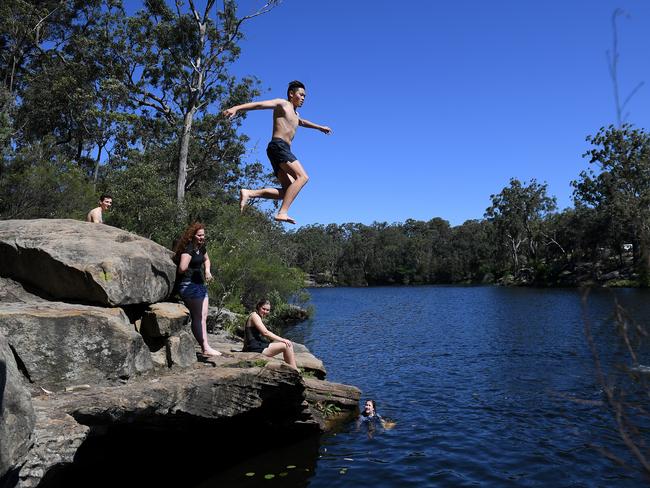
Even closer to Sydney is Lake Parramatta, reopened for swimming in 2015 after Herculean (or perhaps Neptunian) efforts by the Parramatta River Catchment Group to clean it up. It’s not wild – there’s even a section patrolled by lifeguards in warmer months – but it’s surrounded by lush bush and birdlife and makes an excellent starter swimming hole.
Berrima River Reserve, just on the outskirts of the Southern Highlands town, is another easy option. German nationals held at an internment camp here during World War I built diving boards and a slide, as well as a bridge and vegetable garden long-since washed away. The Berrima River Walk is a well-signposted stroll that offers fascinating insights into the area’s history.
ACT
The Murrumbidgee River has numerous sweet swimming spots to spare Canberrans the drive to the south coast. Neal recommends Kambah Pool, a short walk from two car parks and also part of the Murrumbidgee Discovery Track. Sections of this 27km stretch are accessible to mountain bikes.

QUEENSLAND
You can’t go past Fraser Island for swimming holes, according to Neal. The world’s largest sand island isn’t technically inland, but its water holes are. Lake McKenzie is the famous “perched lake” that’s launched a zillion Instagram posts with its blindingly white sand and blue water. “If you are normally afraid of creepy-crawlies in the water, have no fear at Lake McKenzie,” says Neal. “The water is slightly acidic – almost nothing lives in it, which makes it some of the cleanest in the world.” McKenzie is the knockout, but Neal suggests trying Lakes Boomanjin, Wabby and Allom and Eli Creek if time permits.
Gardners Falls near Maleny in the Sunshine Coast hinterland offers extra action with several rope swings at a location fringed by grassy banks and native forest. Neal describes “the regular sound of human gannets launching themselves to drop from great height”. There’s plenty of room to keep clear of the jumpers, including space to swim for exercise, and all a short stroll from the car park on the banks of Obi Obi Creek.
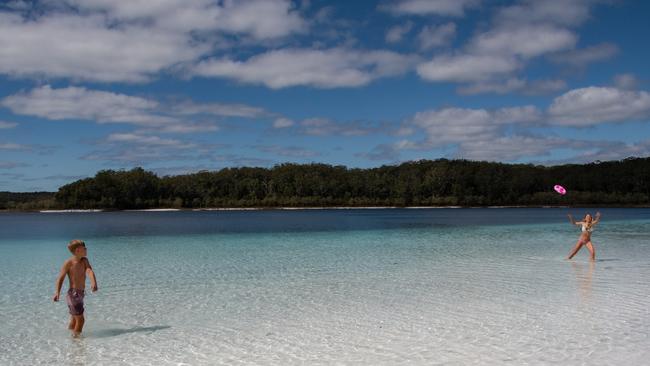
More to the story
Brad Neal advises swimmers to follow two essential rules to be swimming-hole smart. First, never mix alcohol and swimming. “It’s the single biggest risk factor for drowning,” he warns.
Second, post the extended lockdowns in NSW and Victoria where pools have been closed and kids’ lessons cancelled, “everyone’s a bit rusty”, he says. “I encourage people to ease back into it. Have a swim at the local pool before you start tackling natural swimming holes with currents and varying depths and other hazards.”
The authors of Swimming Holes Near Sydney also implore visitors to do their bit to preserve these special places. Take your rubbish out with you, and do a good deed by picking up other litter, too. Also, minimise water contaminants such as sunscreen, especially at pools with little flow.
facebook.com/swimmingholesnearsydney
This story was originally published in January 2021 and has since been updated.

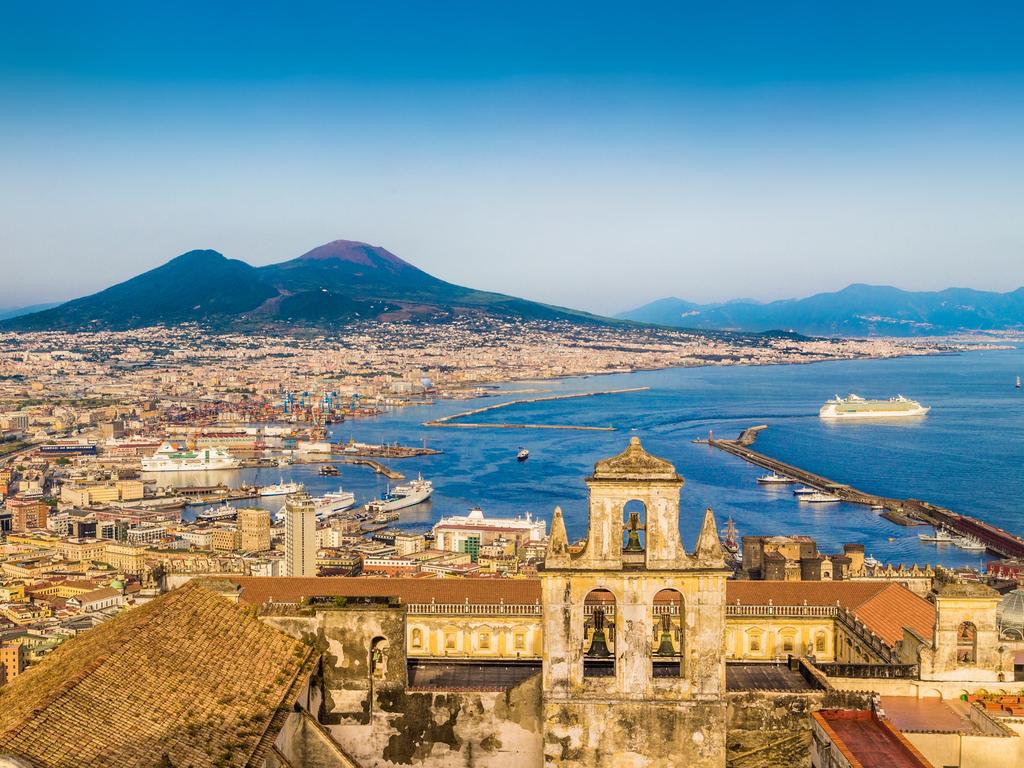
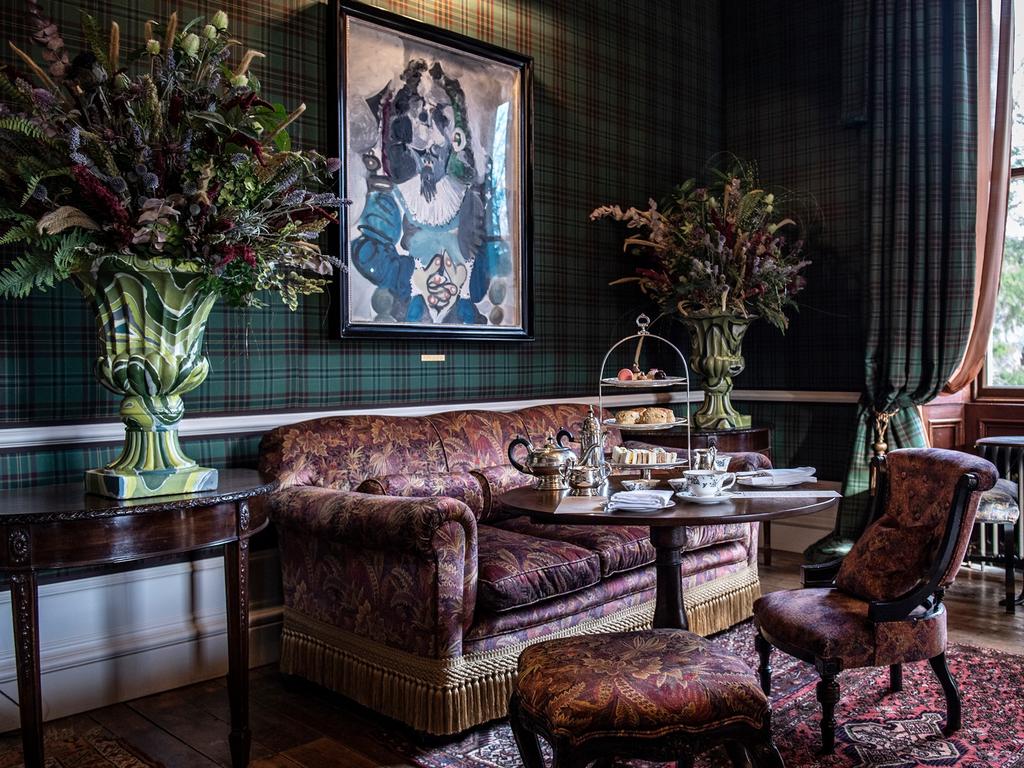
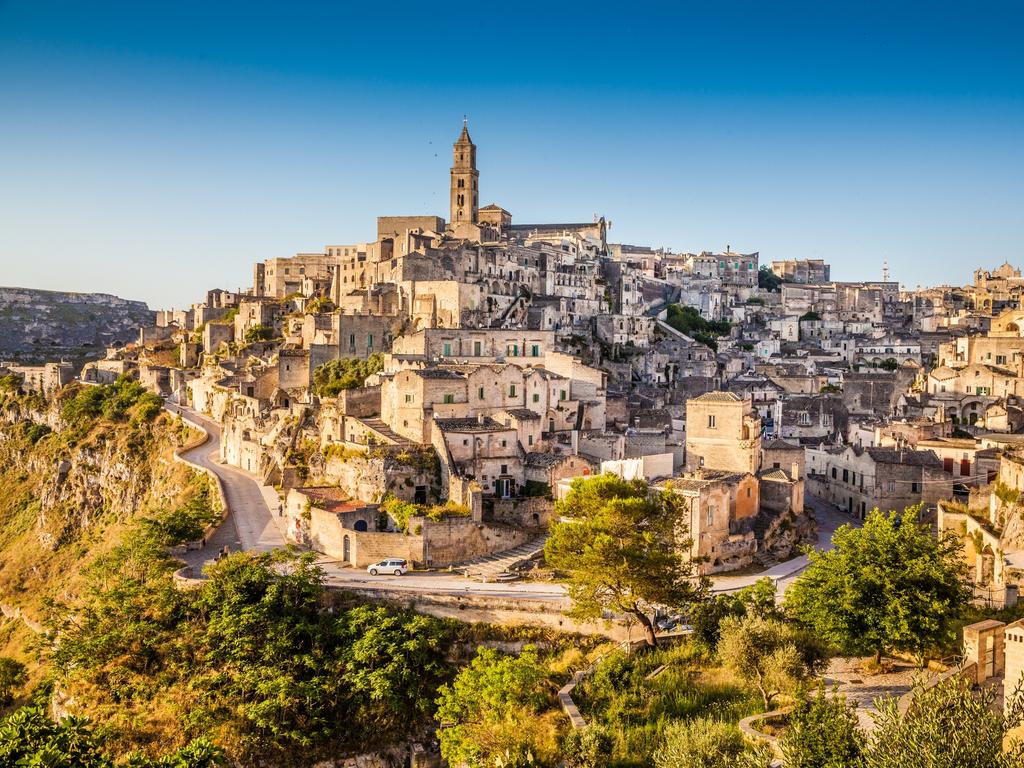
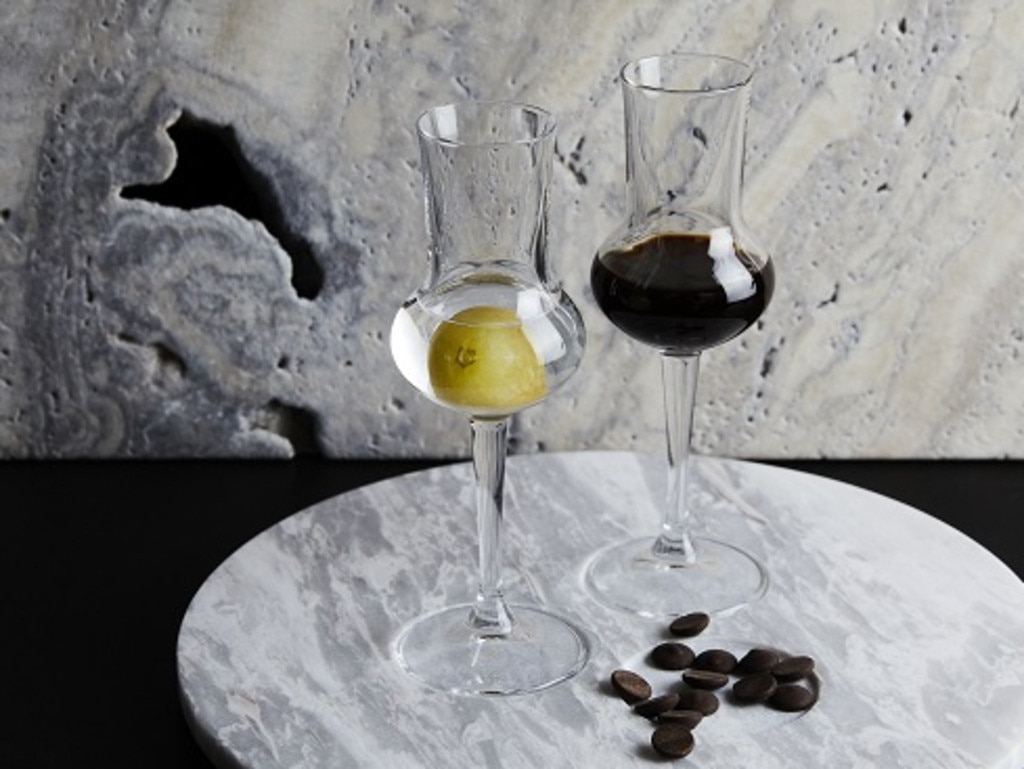
To join the conversation, please log in. Don't have an account? Register
Join the conversation, you are commenting as Logout